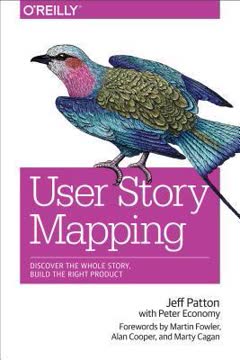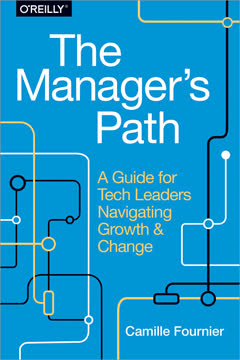Key Takeaways
1. Product roadmaps are strategic communication tools, not project plans
A roadmap is not so much a project plan as a strategic communication tool, a statement of intent and direction.
Strategic focus. Product roadmaps should articulate the "why" behind product decisions, not just the "what" and "when". They provide a high-level view of product direction and strategy, helping teams and stakeholders understand the bigger picture. Unlike project plans, roadmaps don't commit to specific dates or detailed features. Instead, they:
- Communicate product vision and strategy
- Align stakeholders around priorities
- Inspire teams with a compelling future direction
- Provide flexibility to adapt to changing market conditions
Avoid common pitfalls. Many organizations treat roadmaps as fixed promises or detailed project schedules. This approach often leads to:
- Overpromising and underdelivering
- Resistance to necessary changes
- Loss of strategic focus
- Stakeholder frustration and misalignment
2. Align roadmaps with product vision and business objectives
A product vision should be about having an impact on the lives of the people your product serves, as well as on your organization.
Guiding principles. A strong product vision and clear business objectives provide the foundation for effective roadmaps. They help teams make decisions, prioritize work, and stay focused on what matters most. Key components include:
- Product vision: A compelling statement of the future you want to create
- Business objectives: Measurable goals that define success for your product
- Strategy: How you plan to achieve your vision and objectives
Connecting the dots. Every item on your roadmap should tie back to your vision and objectives. This ensures that all product efforts contribute to overall business success. When evaluating potential roadmap items, ask:
- How does this help achieve our vision?
- Which business objectives does this support?
- Is this the best use of our limited resources to reach our goals?
3. Focus on customer needs and problems, not features
Themes are customer needs.
Customer-centric approach. Effective roadmaps organize work around customer needs and problems to be solved, rather than specific features or solutions. This approach, often called "theme-based roadmapping," offers several benefits:
- Flexibility to find the best solutions
- Clearer communication of value to stakeholders
- Easier prioritization based on customer impact
- Reduced risk of building unnecessary features
Identifying themes. To uncover meaningful themes for your roadmap:
- Conduct user research and gather customer feedback
- Create user journey maps to identify pain points
- Use job stories or user stories to articulate needs
- Group related needs into higher-level themes
Organize your roadmap around these themes, providing just enough detail to communicate the customer value without committing to specific solutions too early.
4. Prioritize ruthlessly using objective frameworks
Value/Effort = Priority
Data-driven decisions. With limited resources, prioritization is crucial for roadmap success. Using objective frameworks helps teams make better decisions and avoid common pitfalls like prioritizing based solely on gut feel, customer requests, or sales demands. Popular prioritization frameworks include:
- ROI Scorecard: Evaluate items based on value vs. effort
- Kano Model: Categorize features as must-haves, performance, or delighters
- Opportunity Scoring: Assess importance vs. satisfaction for customer needs
- Critical Path: Identify the key problems that must be solved for success
Collaborative process. Involve key stakeholders in the prioritization process to gain alignment and leverage diverse perspectives. Use techniques like:
- T-shirt sizing for quick effort estimates
- Dot voting to gauge stakeholder interest
- Workshops to discuss and debate priorities
- Regularly scheduled prioritization reviews
5. Achieve stakeholder alignment through collaborative processes
Alignment is not consensus.
Building buy-in. Gaining stakeholder alignment is crucial for roadmap success, but it doesn't mean everyone has to agree on everything. Effective alignment processes:
- Involve key stakeholders early and often
- Focus on shared goals and outcomes
- Allow for healthy debate and diverse perspectives
- Result in a clear direction, even if not everyone agrees 100%
Collaborative techniques. Use a combination of approaches to build alignment:
- Shuttle diplomacy: One-on-one meetings with key stakeholders
- Workshops: Collaborative sessions to define vision, priorities, and roadmap items
- Regular reviews: Ongoing touchpoints to discuss progress and adjustments
Remember that alignment is an ongoing process, not a one-time event. Continuously communicate and reinforce the roadmap to maintain stakeholder buy-in.
6. Communicate roadmaps effectively to different audiences
Every stakeholder will benefit from a view into what's coming, and an opportunity to contribute
Tailored communication. Different stakeholders have varying information needs and levels of detail they care about. Adapt your roadmap presentation for each audience:
- Executives: High-level strategy, business impact, and key milestones
- Sales & Marketing: Upcoming value propositions and rough timelines
- Development teams: More detailed themes and potential solutions
- Customers: Focus on problems to be solved and value to be delivered
Visualization techniques. Use visual elements to enhance roadmap communication:
- Now/Next/Later time horizons for flexibility
- Color-coding to indicate themes or confidence levels
- Icons to represent different types of work or objectives
- Progressive disclosure to reveal appropriate levels of detail
Balance providing enough information to be useful without overcommitting to specifics that may change.
7. Embrace change and regularly update your roadmap
When conditions in the environment change, your roadmap—like any living thing—must change as well in order to survive.
Adaptive planning. Markets, technologies, and customer needs evolve rapidly. Successful roadmaps embrace this change rather than resisting it. Key principles for managing roadmap evolution:
- Set a regular cadence for roadmap reviews (e.g., quarterly)
- Monitor key metrics and market signals to identify necessary changes
- Be transparent about changes and the reasons behind them
- Maintain a "living" roadmap that's always up-to-date
Balancing stability and flexibility. While change is inevitable, too much change can lead to chaos. Strike a balance by:
- Keeping high-level themes stable while allowing flexibility in specific solutions
- Using confidence levels to indicate the likelihood of planned items
- Focusing on shorter time horizons for greater certainty
- Regularly communicating both what's changing and what's staying the same
8. Relaunch your roadmapping process to drive organizational success
Look for every opportunity to start small and demonstrate early success.
Continuous improvement. Regularly assess and improve your roadmapping process to maximize its effectiveness. Steps for relaunching your approach:
- Assess your current situation using a roadmap health checklist
- Get stakeholder buy-in for process improvements
- Train team members on new techniques and expectations
- Start with small, incremental changes to build momentum
- Evaluate results and align on next steps
- Repeat the process, continuously evolving your approach
Cultural shift. Relaunching roadmaps often requires a shift in organizational culture and mindset. Focus on:
- Moving from output to outcome-based thinking
- Embracing uncertainty and learning
- Encouraging cross-functional collaboration
- Valuing flexibility and adaptability
By continuously improving your roadmapping process, you can drive better product decisions, increase stakeholder alignment, and ultimately deliver more value to your customers and organization.
Last updated:
FAQ
What's Product Roadmaps Relaunched about?
- Modern Roadmapping Focus: The book emphasizes updating traditional roadmapping practices to align with Agile and Lean methodologies, viewing roadmaps as strategic communication tools rather than rigid project plans.
- Customer-Centric Approach: It advocates for theme-driven roadmaps that prioritize delivering value to customers, helping teams adapt to changing market conditions.
- Framework for Success: Provides a flexible framework for creating effective roadmaps, including gathering inputs, establishing product vision, and achieving stakeholder alignment.
Why should I read Product Roadmaps Relaunched?
- Practical Guidance: Offers practical advice and real-world examples from experienced product leaders, making it a valuable resource for product management.
- Team Alignment: Emphasizes aligning product teams around a shared vision and strategic goals, crucial for collaboration and successful outcomes.
- Embracing Uncertainty: Encourages adapting roadmaps as new information becomes available, essential for navigating product development complexities.
What are the key takeaways of Product Roadmaps Relaunched?
- Relaunching Roadmaps: Stresses the need to make roadmaps relevant in a changing market, viewing them as living documents that evolve with the product.
- Themes Over Features: Highlights the shift from feature-based to theme-driven roadmaps, focusing on customer needs and outcomes for effective prioritization.
- Collaboration and Communication: Underlines the importance of stakeholder collaboration and clear communication to ensure alignment and common goals.
What are the best quotes from Product Roadmaps Relaunched and what do they mean?
- “No roadmap survives contact with reality.”: Highlights the need for adaptable and flexible roadmaps that can adjust to real-world changes.
- “It’s all about solving problems, not implementing features.”: Emphasizes prioritizing customer needs and outcomes over a checklist of features.
- “Your product roadmap is the prototype for your strategy.”: Illustrates that roadmaps should guide product development, aligning efforts with vision and goals.
How does Product Roadmaps Relaunched define a product roadmap?
- Strategic Communication Tool: Describes a roadmap as a tool outlining how a product will achieve its vision and deliver customer value.
- Focus on Value Delivery: Emphasizes value delivery over listing features or deadlines, aligning with customer needs and business objectives.
- Living Document: Stresses that a roadmap should evolve with new insights and information, adapting to market and customer feedback.
What are themes and subthemes in the context of roadmapping?
- High-Level Customer Needs: Themes are high-level customer needs or problems the product aims to address, organizing the roadmap around value delivery.
- Granularity of Subthemes: Subthemes break down high-level needs into actionable items, aiding prioritization in product development.
- Importance of Clarity: Using themes and subthemes maintains clarity and focus on customer needs, avoiding misalignment with strategic goals.
How can I gather inputs for my product roadmap according to Product Roadmaps Relaunched?
- Market Research: Conduct thorough research to understand the business environment, analyzing competitors, trends, and customer feedback.
- Customer Engagement: Engage directly with customers through interviews and surveys to uncover needs and pain points, informing roadmap priorities.
- Stakeholder Collaboration: Involve stakeholders from various departments to ensure roadmap alignment with broader business objectives and shared understanding.
What prioritization frameworks does Product Roadmaps Relaunched recommend?
- Critical Path Analysis: Identifies critical tasks for achieving project goals, focusing on key customer journey pain points.
- Kano Model: Categorizes features based on customer satisfaction, helping prioritize impactful features by distinguishing needs.
- ROI Scorecard: Evaluates initiatives based on return on investment, encouraging a data-driven approach to resource allocation.
How does Product Roadmaps Relaunched suggest achieving alignment and buy-in for roadmaps?
- Shuttle Diplomacy: Involves meeting stakeholders individually to gather input and build consensus, managing differing opinions.
- Co-Creation Workshops: Organize workshops for stakeholders to collaboratively create the roadmap, fostering open dialogue and diverse perspectives.
- Regular Communication: Keep stakeholders informed and engaged with regular updates and feedback opportunities to maintain alignment.
What is the Kano model mentioned in Product Roadmaps Relaunched?
- Customer Expectations Classification: Categorizes needs into expected, normal, and exciting, helping prioritize features based on satisfaction impact.
- Dynamic Nature of Expectations: Highlights that expectations change over time, requiring continuous assessment and adaptation of offerings.
- Prioritization Framework: Assists in understanding which features to prioritize, ensuring critical customer needs are effectively addressed.
How does Product Roadmaps Relaunched define the concept of "critical path"?
- Identifying Key Needs: Refers to essential needs for product success, focusing efforts on solving pressing customer problems.
- Foundation for Roadmap Development: Prioritizes features and initiatives aligning with key needs, ensuring maximum value delivery.
- Dynamic Nature: Emphasizes adaptability as customer needs evolve and market conditions shift, requiring vigilant priority reassessment.
What are some common pitfalls in roadmapping that Product Roadmaps Relaunched addresses?
- Overpromising Deliverables: Warns against making unrealistic commitments, which can lead to disappointment and erode trust.
- Lack of Customer Focus: Highlights the risk of not prioritizing customer needs, leading to products that don't resonate with users.
- Rigid Planning: Advises against overly rigid roadmaps, advocating for flexibility to adapt to new insights and market changes.
Review Summary
Product Roadmaps Relaunched is praised for its comprehensive guide on creating effective product roadmaps. Readers appreciate its focus on aligning vision, objectives, and themes rather than specific features. The book offers valuable insights on prioritization, stakeholder communication, and adapting to uncertainty. Many found it useful for both new and experienced product managers. Some reviewers noted repetition and a lack of real-world examples. Overall, it's considered a valuable resource for product management, with practical advice on crafting strategic roadmaps that communicate product vision and value.
Similar Books










Download PDF
Download EPUB
.epub digital book format is ideal for reading ebooks on phones, tablets, and e-readers.




